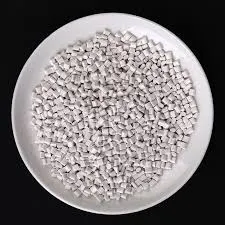Types of Chlorine Used in Water Treatment
Water is a vital resource for life, and ensuring its cleanliness and safety is a primary concern for municipalities and industries alike. One of the most widely used methods for disinfecting water is the application of chlorine. This chemical has proven its efficacy in killing harmful pathogens and preventing waterborne diseases. However, not all chlorine is created equal. There are several types of chlorine used in water treatment, each with its specific applications, advantages, and limitations.
1. Chlorine Gas
One of the oldest and most common forms of chlorine used in water treatment is chlorine gas (Cl₂). Produced from the electrolysis of salt water, chlorine gas is highly effective as a disinfectant. When dissolved in water, it forms hydrochloric acid and hypochlorous acid, the latter being the active component that kills bacteria and other microorganisms.
Chlorine gas is typically used in large-scale municipal water treatment plants due to its low cost and effectiveness. However, it poses safety risks, as chlorine gas can be hazardous to human health and the environment if not handled properly. Therefore, strict safety protocols must be in place when using this form of chlorine.
2. Sodium Hypochlorite
Sodium hypochlorite (NaOCl), commonly known as liquid chlorine, is another popular option for water disinfection. It is usually manufactured by reacting chlorine gas with sodium hydroxide. Sodium hypochlorite is convenient to use, as it is typically sold in liquid form and can be easily transported and handled.
This form of chlorine has a lower concentration of chlorine compared to gas but is effective at killing bacteria and other pathogens. It is commonly used in swimming pools, household bleach, and various water treatment applications. However, sodium hypochlorite can degrade over time, particularly when exposed to sunlight and heat, which can diminish its effectiveness.
types of chlorine used in water treatment

3. Calcium Hypochlorite
Calcium hypochlorite (Ca(OCl)₂) is another chlorine compound commonly used in water treatment. This white solid, available as dry granules or tablets, is often used in various applications, including swimming pools, residential water treatment, and emergency disinfection situations.
Calcium hypochlorite offers several advantages, such as a longer shelf life compared to sodium hypochlorite and stability even under conditions of heat and sunlight. It’s also easy to handle and store, making it a convenient choice for many operators. However, like other forms of chlorine, it must be handled with care due to its reactive properties.
4. Chlorine Dioxide
Chlorine dioxide (ClO₂) is a powerful disinfectant that is becoming increasingly popular in water treatment processes. Unlike traditional chlorine, chlorine dioxide does not form harmful byproducts when used in water treatment, making it a more environmentally friendly option. It is particularly effective against certain pathogens, such as Giardia and Cryptosporidium, which are resistant to standard chlorination.
Chlorine dioxide is generated on-site and has a higher cost than other chlorine options. However, its effectiveness and lack of toxic byproducts make it a valuable choice for many water treatment facilities seeking to improve water quality and safety.
Conclusion
Chlorine has long been an essential player in the arena of water treatment. With various forms like chlorine gas, sodium hypochlorite, calcium hypochlorite, and chlorine dioxide, water treatment facilities can select the most appropriate type based on specific needs and circumstances. Each type has its unique advantages and considerations, and understanding these variations is crucial for ensuring effective water disinfection. As water quality standards continue to evolve, the role of chlorine in maintaining public health will remain indispensable, requiring ongoing assessment and innovation in its application.

